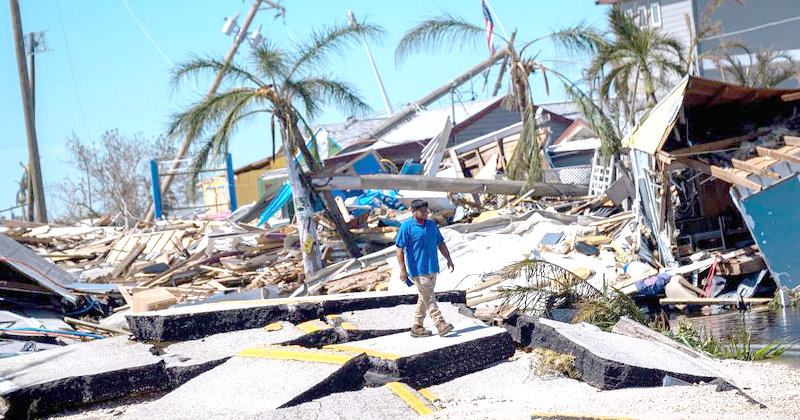The P&C insurance industry has experienced challenges in recent years due, in large part, to increases in the frequency and severity of natural catastrophes, as well as a tightening reinsurance market. The net combined ratio for the property/casualty insurance industry was 102.4, with underwriting losses for personal lines partially offset by underwriting gains for commercial lines.
The divergence in performance was particularly stark, with personal lines logging a combined ratio of 109.9 vs. 94.8 for commercial lines, the largest difference in at least 15 years.
Looking ahead, the 2023 net combined ratio is forecast to be 101.5 according to the latest underwriting projections by actuaries at the Insurance Information Institute (Triple-I) and Milliman.
The phenomenon of social inflation has garnered a great deal of attention in the property and casualty P&C insurance industry. The term defies strict definition, though it is widely acknowledged to involve excessive growth in insurance settlements.
P&C Insurance Market underlying growth continues

US property and casualty P&C industry underwriting results are likely to improve in 2023 as premium rates rise significantly in underperforming automobile and property segments. Claims volatility amid higher inflation and macro uncertainty may impede a return to underwriting profitability, according to Fitch Ratings.
Re/Insurers discussed key macroeconomic trends impacting the property/casualty industry results including inflation, rising interest rates and overall P&C underlying growth.
P&C underlying growth continues to be constrained by monetary policy with no relief in sight, contracting -1.5% YTD compared with U.S. Gross Domestic Product (GDP) at 1.3%.
According to 2023 US P&C Insurance Outlook, declining underwriting performance in personal lines drove a 31% drop in statutory earnings in 2022 for the P&C industry. The personal lines sector should improve in 2023, as recent pricing and underwriting adjustments take hold amid normalizing insured catastrophe losses.
Rising interest rates depress new housing starts

GDP is forecast to grow slightly above Fed expectations between 2023 and 2025, but to remain below the Fed’s long term growth expectation for the foreseeable future.
U.S. growth dropped over the last six months as rising interest rates depress new housing starts, corporate capital investments and spending on vehicles.
Triple-I expects prospects for a U.S. recession by year-end 2023 to be high as Fed remains hawkish, putting its long-term growth expectation further out-of-reach.
While it is unlikely that the stronger-than expected April jobs performance will lead the Fed to aggressively accelerate the pace of current monetary tightening, it may, however, expand the duration of the current tightening cycle.
P&C replacement costs are up an average of 40% since the beginning of the pandemic, significantly above cumulative increases in overall inflation.
P&C insurance industry underwriting projections

Commercial lines achieved lower net combined ratios than personal lines in both 2021 and 2022, and we forecast that to continue through at least 2025.
Commercial lines combined ratios in aggregate are anticipated to slightly deteriorate from current favorable underwriting profit levels (see Most expensive US P&C and Life Insurance Companies).
All product lines are benefiting from improved efficiency to significantly reduce both operating and loss adjustment expense ratios, as evidenced by the industry expense ratios for 2022.
Following a 39% increase from 2018-21, industry policyholders’ surplus (PHS) declined by 7% to $980 billion in 2022, largely from large unrealized investment losses, projected to fall below the 10-year average level of 7%.
Growth in direct written premiums will moderate slightly in 2023, but remain above historical norms as momentum in personal lines premiums accelerate.
Looking at personal auto, the 2022 net combined ratio came in at 112.2, 10.7 points worse than 2021 and 19.7 points worse than 2020.
The industry has not had this poor of a full year underwriting performance in decades, unless replacement cost trends begin to decrease materially – which is not currently forecast – it will take the industry into at least 2025 to restore personal auto results to underwriting profitability. For homeowners, the net combined ratio came in at an unprofitable 104.6.

Natural and man-made disasters resulted in global economic losses of USD 280 billion in 2022, the sixth highest on Swiss Re sigma records, and the 16th highest since 1970 after normalising for GDP growth effects.
Hurricane Ian, the second-costliest insured loss after Hurricane Katrina, was a significant driver of underwriting losses for the industry.
Of the economic losses, $270 bn was attributable to natural catastrophes. In addition to a devastating earthquake in Haiti that, sadly, claimed more than 2 000 lives, there were more than 50 severe flood events across the world, as well as tropical cyclones, episodes of extreme cold and heat, and severe convective storms (SCS).
Insurance reforms in Florida will lead to relief of homeowners insurance market. The new laws include the elimination of assignment of benefits and the one-way attorneys’ fees rule for property claims and reduces the amount of the time to 18 months in which a supplemental claim can be filed.
Commercial property insurance, general liability & workers compensation

Commercial property, general liability, and workers compensation were bright spots for the industry, each logging underwriting gains in 2022.
The 20 percentage point (ppt) gap between personal and commercial insurance lines loss ratios in the first nine months of 2022 is likely to decrease in 2023 as personal lines rate increases gain momentum and the drivers of motor inflation decelerate.
The US P&C industry recorded a net underwriting loss of $26.5 billion in 2022, worsening by $21.5 billion from the previous year, according to S&P Global Market Intelligence. The US insurers showed a substantial weakening of underwriting profitability over the year, with personal lines losses and the impact of Hurricane Ian causing its collective combined ratio to deteriorate to 102.7%.
Commercial auto and the commercial multi-peril lines were sources of weakness in 2022, with each seeing combined ratios of about 105.
Commercial auto performed surprisingly well in 2021, but this appears to have been short-lived, as underwriting losses driven in part by material prior year adverse development returned in 2022.
Insurers expect further rate increases will be needed to offset loss pressures affecting this line.
Cyber insurance market

Cyber insurance direct written premium grew 50% in 2022. The cumulative growth over the last seven years has been 620%. The cyber insurance market is anticipated to maintain favorable premium growth and underwriting results through 2023; however, pricing will likely moderate further this year in response to recent profits and competitive factors.
According to The Council of Insurance Agents & Brokers’ Commercial P&C Market Survey, for the first time in six quarters, the average increase in premiums for cyber fell below 20%, coming in at 15% in Q4 2022.
While still high, this increase was noticeably down from the line’s peak of 34.3% at the end of 2021, suggesting the line may have begun to stabilize in Q4 or even Q3, when some respondents first commented on the possibility of some premium pricing relief (see Cyber Security Top Trends & Cyber Attack Threats).
The direct incurred loss & DCC ratios for the last eight years have averaged 49% with 2022 coming in slightly below average at 45%.
Workers compensation is healthy and strong within the commercial line results. The shifting workplace and workforce, the impact of the pandemic, and the economic recovery affected volume and location of workers compensation risk, but not profitability.
According to Fitch Ratings, average cyber renewal insurance premium rate increases have decelerated, with a 15% sequential-quarter increase in 4Q22 down considerably from a record 34% increase in 4Q21.
Industry statutory direct written premiums for cyber coverage in standalone and package policies increased by over 50% in 2022 to $7.2 bn, following 73% premium growth in the prior year.
TReferring to private carriers, premium increased 11%, returning to near the pre-pandemic levels of 2019. his marks the sixth consecutive year with a workers compensation net combined ratio under 90 and the ninth consecutive year of underwriting gains.
………………
AUTHORS: Michel Léonard – PhD, CBE, Chief Economist and Data Scientist at Triple-I, Dale Porfilio – FCAS, MAAA, Chief Insurance Officer of Triple-I, Dave Moore – FCAS, MAAA, President of Moore Actuarial Consulting, Donna Glenn – Chief Actuary at the National Council on Compensation Insurance








